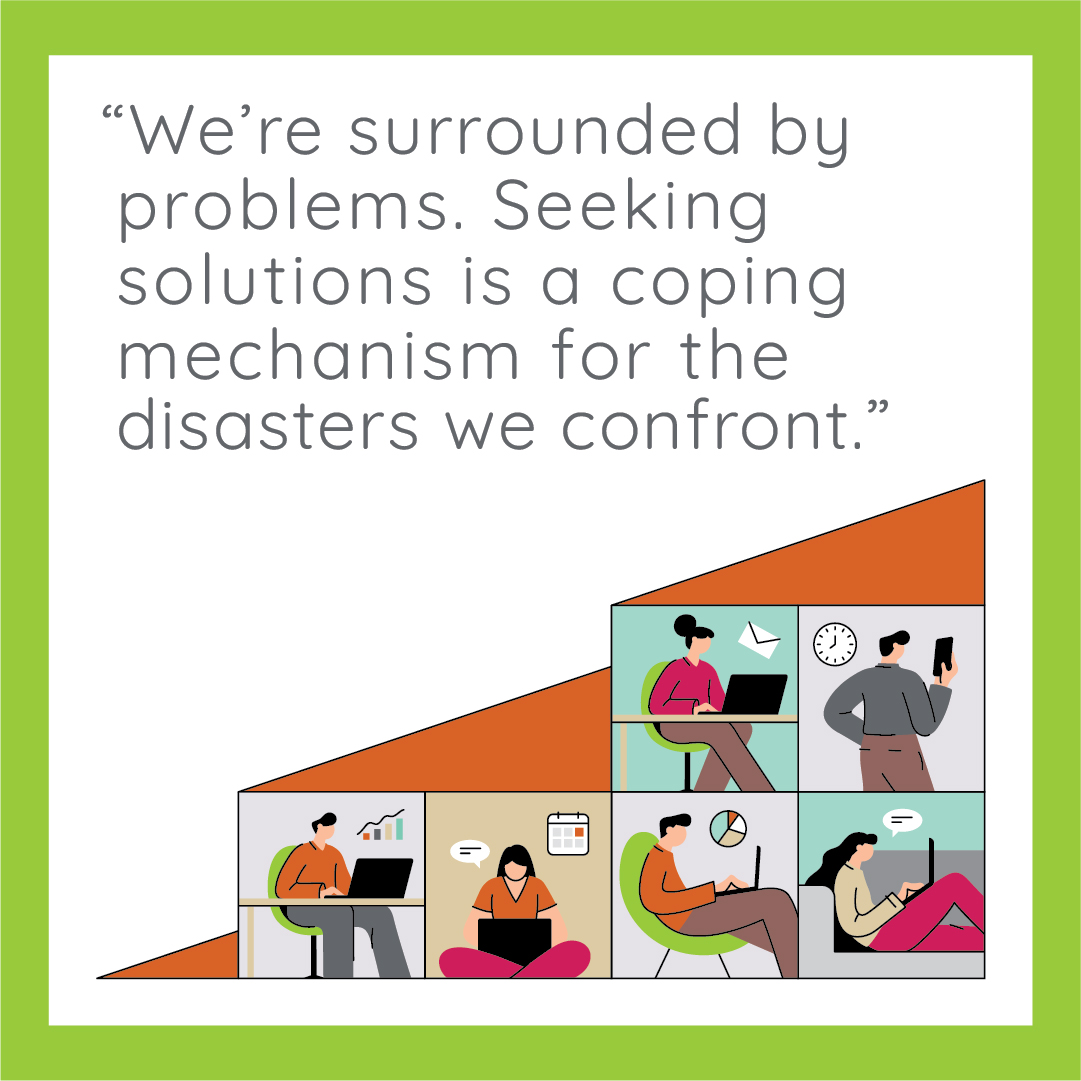
Five learnings for being remotely creative in the new year
Remotely creative? Or not even a bit? Seriously, how do you do the best work and continue to get the best work from your team in an environment where nearly everyone is fatigued from talking into their laptops? Or they’re explaining their grand idea for nearly a minute while the mute button is on and everyone else on the call is mouthing the statement of the year like they’re asking for directions in a foreign country? How do you engage in concepting exercises or branding workshops, brainstorm efficiently, and keep people motivated in the wake of a pandemic election year with a soured economy, lockdowns, home schooling, and dreadful news on every front?
Creativity is sparked by the need to solve a problem or answer a question. We’re surrounded by problems. Seeking solutions is a coping mechanism for the disasters we confront. The opportunity for creativity is a gift in this moment. But the transition from live team engagement to virtual meeting platforms has added pain points to the creative process. As we strive in 2021 to work better together from farther away, a few suggestions for maintaining the momentum come to mind:
- Make time for discussion about creative things that are independent from the work you are doing. Schedule early morning or late afternoon meetings every few weeks to discuss creativity in any form or to share ideas, technologies, books, or visuals that inspire and engage. Give oxygen to creative discourse that is not “on demand.” Frankly we all need the distraction. Invariably these conversations lead to fresh thinking and better work.
- Stay in touch outside the “platform.” Virtual meetings are slowly eroding the connective tissue among teams. While people dial in, they are increasingly not “dialed-in” due to the off-camera button and the impulse to multitask. Instead, talk through ideas via one-on-one phone conversations. Get into a routine of phoning creative team members. Zoom fatigue is real and can sap the energy needed for creative problem-solving. Phone calls are at once efficient and meaningful and a good way to keep in touch overall.
- Ensure that brainstorms have structure and tools for ideation. Prompts, pre-reads, and frameworks for discussion help the flow of ideas. Online tools such as usecandor.com and ideaboardz.com are great for remote brainstorms. Also consider half-hour mini brainstorms among smaller teams to ensure people have a voice. Trying to facilitate a brainstorm among a checkerboard of Zoom heads is frustrating and usually ends up with 2 or 3 people dominating the conversation.
- Look everywhere for opportunities to be creative. Not every project requires an immersive creative concepting exercise or a new creative solution, but a compelling presentation and storytelling are always valuable, whether for a case study, pitch, brand planning, or project presentation. They also help to break down silos among teams and help keep creative teams engaged with their cross-functional partners.
Identify opportunities for thought leadership among creatives, either internally or externally. Allow creatives to present completed work to the agency or become subject matter experts. This helps team members feel a sense of forward momentum and relevance. In 2020, we’ve all felt as if everything is “on hold” in our lives. Allowing creatives to showcase what they’re good at reinforces a sense of purpose and keeps the excitement for creative thinking alive.
